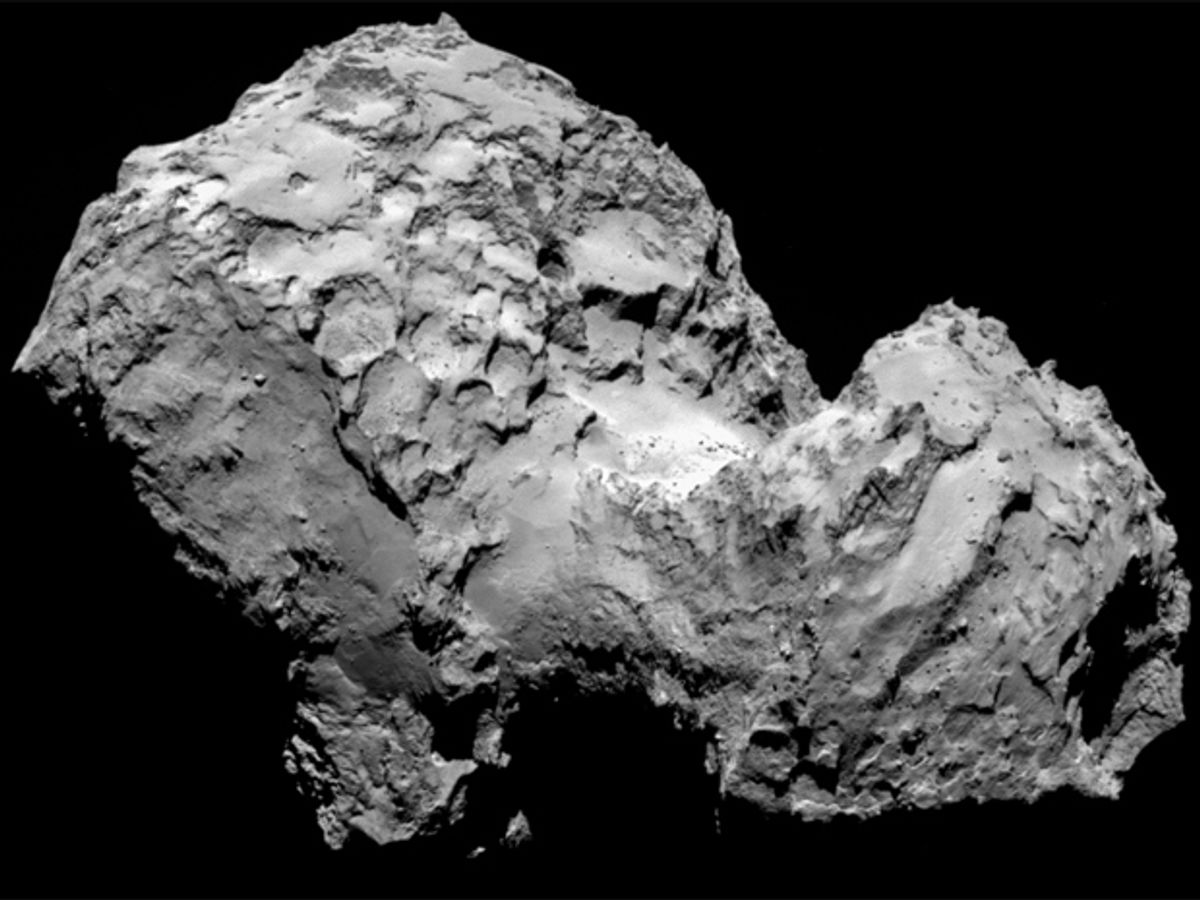A decade of lonely spaceflight has paid off as Europe's Rosetta spacecraft became the first in history to rendezvous with an icy comet on Aug. 6. The spacecraft arrived at a comet speeding through the solar system at almost 55,000 kilometers per hour as it prepares to begin its main mission phase for the next 15 months. The next step includes a series of triangular maneuvers designed to bring Rosetta closer to the target comet.
The 1.3-billion euro mission has targeted a comet named 67P that is currently located 405 million kilometers from Earth—about halfway between the orbits of Jupiter and Mars. But getting to this point hasn't been easy. Rosetta had to perfectly execute ten rendezvous maneuvers, including three gravity-assist flybys of Earth and one of Mars, to reach the comet without overshooting its target.
"After ten years, five months and four days traveling towards our destination, looping around the Sun five times and clocking up 6.4 billion kilometers, we are delighted to announce finally 'we are here," said Jean-Jacques Dordain, director general of ESA, in a press release.
Rosetta's mission controllers seemed to exhibit pride more than outright jubilation upon receiving the confirmation signal from Rosetta, according to David Shukman, science editor at BBC News. That signal took 23 minutes to travel to Earth from the spacecraft's current location.
But command signals have taken as long as 50 minutes to reach Rosetta at its farthest distance from Earth during the decade-long trek to the comet. The spacecraft has relied upon onboard computers to handle data management, attitude and orbit control, as well as automatically spinning the spacecraft once a minute so that its solar panels can receive sunlight, according to the ESA FAQ on the mission.
Rosetta also used a hibernation mode to minimize power and fuel consumption since launching in 2004. That meant shutting off most of the electrical systems aside from radio receivers, command decoders and the power supply.
The rendezvous sets the stage for the spacecraft to accompany the comet as it swings around the sun and back out toward Jupiter over the next year. Rosetta's current position puts it about 100 kilometers from the comet, but it will attempt to move closer with "triangular-shaped trajectories" in front of the comet at distances of 100 km and 50 km.
Such maneuvers—following a path that sketches out a series of triangular shapes—will allow Rosetta to close the distance until it can try to enter an almost circular orbit at a distance of just 30 km. That close orbit will allow the spacecraft to do detailed mapping of the comet .
A closer encounter with the comet could allow Rosetta to attempt another milestone in space exploration—achieving the first landing on a comet. The spacecraft lander, named Philae, has the tools to drill down about 23 centimeters into the comet's surface if it succeeds in landing intact sometime in November.
Jeremy Hsu has been working as a science and technology journalist in New York City since 2008. He has written on subjects as diverse as supercomputing and wearable electronics for IEEE Spectrum. When he’s not trying to wrap his head around the latest quantum computing news for Spectrum, he also contributes to a variety of publications such as Scientific American, Discover, Popular Science, and others. He is a graduate of New York University’s Science, Health & Environmental Reporting Program.




